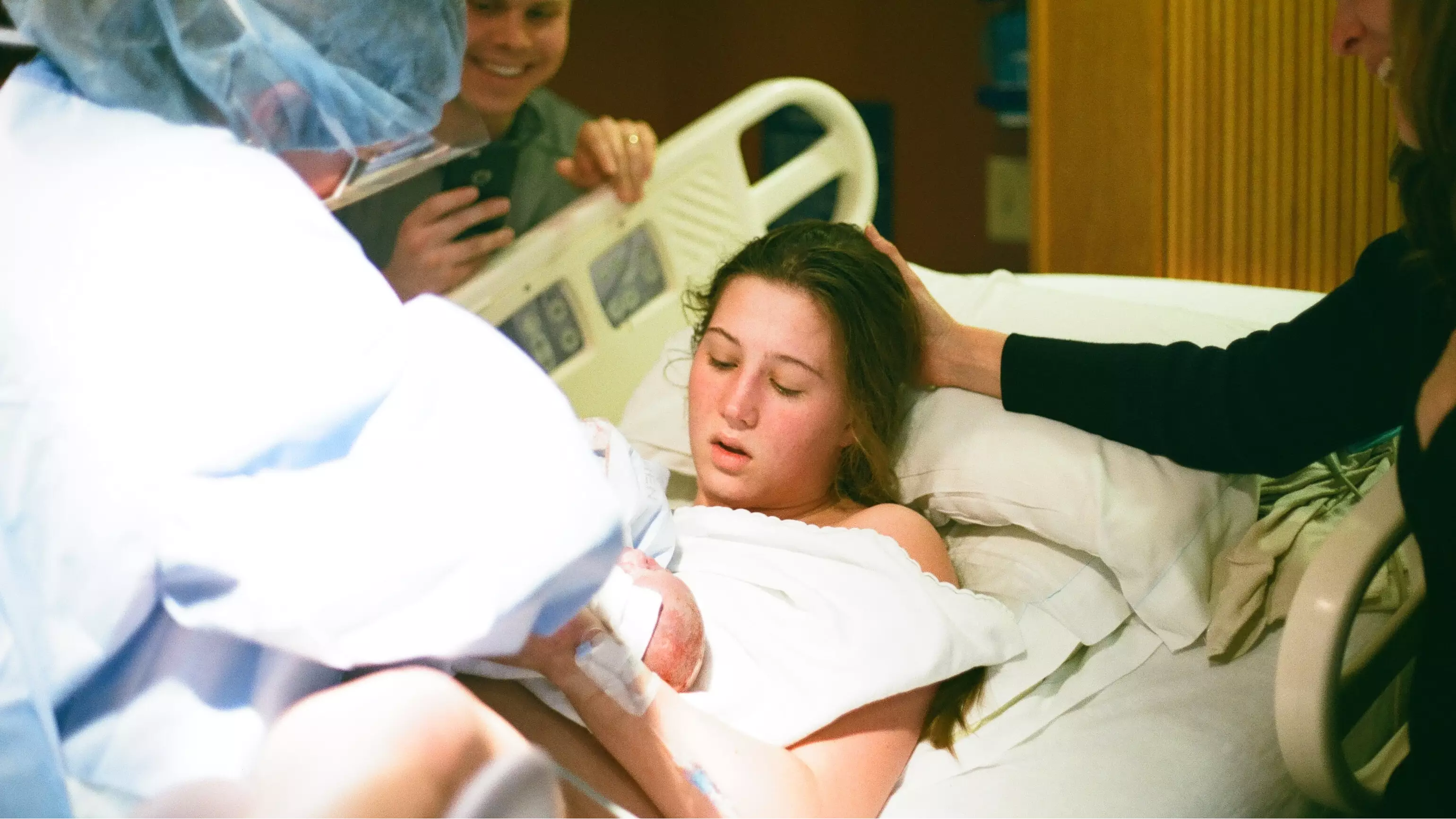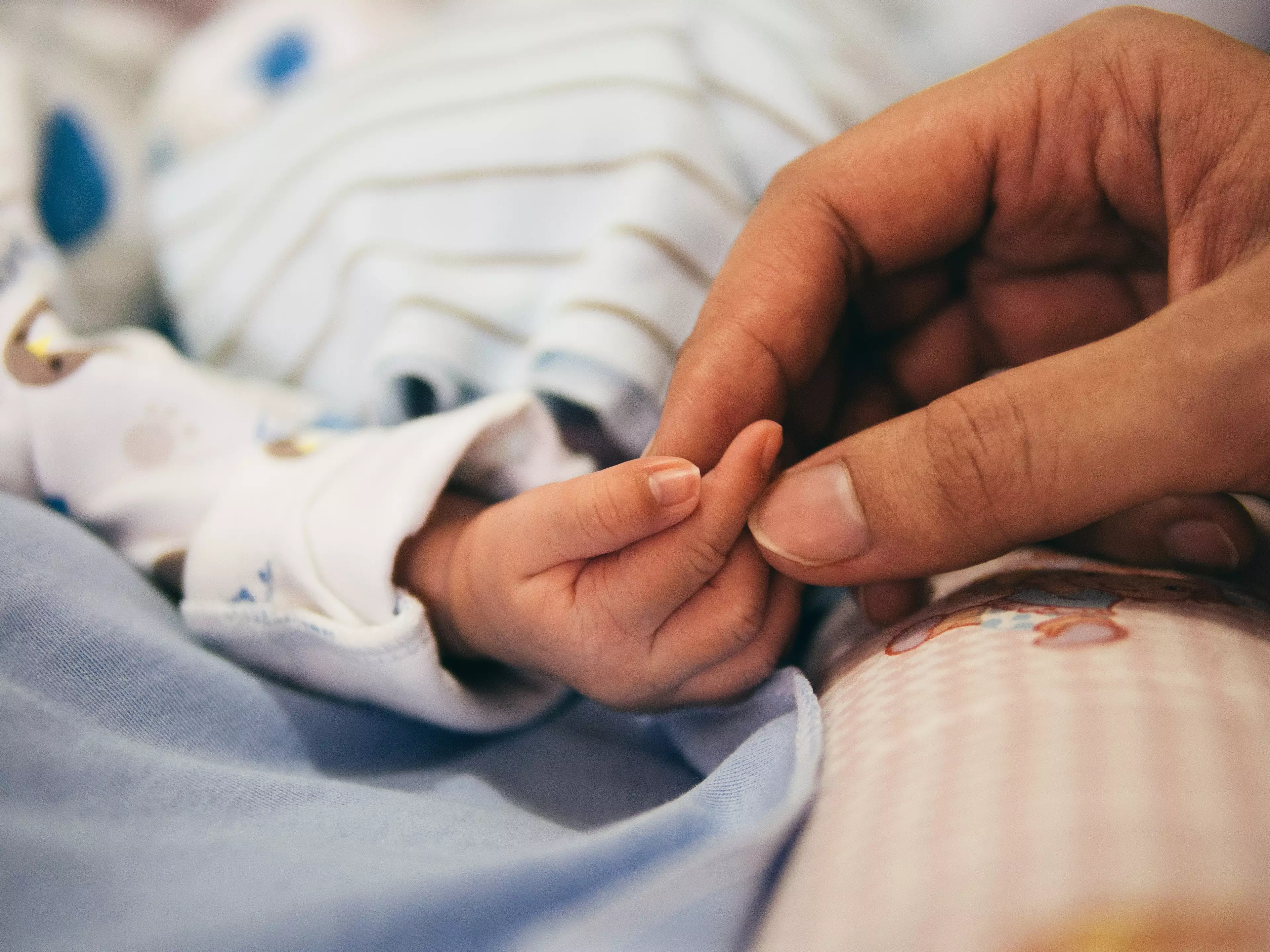
A photo showing a woman's bones moving during labour is going viral - and it's all kinds of incredible.
We already knew that women's bodies are amazing things, but this photo of a woman during labour proving the unbelievable way our bodies adapt and change during pregnancy.
Advert
The photo, shared by North Dallas Doula Associates on Instagram shows a second-time mum during a rapid birth, where a wedge-shaped area of bone is seen protruding at her lower back.
They explained the bulge is named the rhombus of Michaelis, the area at the bottom of the spine made up of three vertebra which moved backwards during the second stage of labour.
Quoting the words of midwife and scholar Jean Sutton, they write: "The rhombus of Michaelis (sometimes called the quadrilateral of Michaelis) is a kite-shaped area that includes the three lower lumber vertebrae, the sacrum and that long ligament which reaches down from the base of the scull to the sacrum.
"This wedge-shaped area of bone moves backwards during the second stage of labour and as it moves back it pushes the wings of the ilea out, increasing the diameters of the pelvis.
Advert
"We know it's happening when the woman's hands reach upwards (to find something to hold onto, her head goes back and her back arches."

It goes on: "It's what Sheila Kitzinger (1993) was talking about when she recorded Jamaican midwives saying the baby will not be born 'till the woman opens her back'. I'm sure that is what they mean by the 'opening of the back'.
"The reason that the woman's arms go up is to find something to hold onto as her pelvis is going to become destabilised. This happens as part of physiological second stage; it's an integral part of an active normal birth.
Advert
"If you're going to have a normal birth you need to allow the rhombus of Michaelis to move backwards to give the baby the maximum amount of space to turn his shoulders in.
"Although the rhombus appears high in the pelvis and the lower lumbar spine when it moves backwards, it has the effect of opening the outlet as well.
"When women are leaning forward, upright, or on their hands and knees, you will see a lump appear on their back, at and below waist level.
Advert
"It's much higher up than you might think; you don't look for it near her buttocks, you look for it near her waist."
We're pretty amazing aren't we?
Featured Image Credit: Unsplash/Olivia Snyder